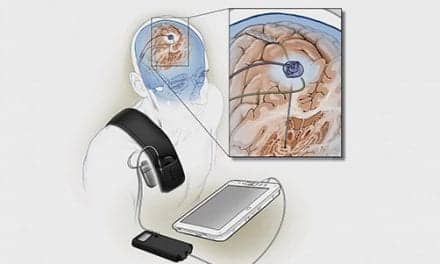09-13-2006
A Thomas Jefferson University team has found that a personalized program of occupational and physical therapy—plus modifications in the home—can go a long way to help elderly individuals continue to live independently and also live longer.
Laura Gitlin, PhD, director of the Center for Applied Research on Aging and Health at Thomas Jefferson University in Philadelphia, and her team reported previously that a brief six-visit program consisting of physical therapy, occupational therapy, home modification, and some instruction in problem-solving helped elderly individuals in performing daily activities. After 6 months, those of the 319 men and women ages 70 and older enrolled in the study who received the intervention had fewer difficulties with daily living tasks, especially personal care activities such as bathing and going to the toilet, than those who did not receive the help. Intervention participants were less afraid of falling, had more confidence in their abilities to manage everyday activities, and used more effective coping strategies.
In a 14-month follow-up study, Gitlin, who is professor of occupational therapy at the College of Health Professions of Thomas Jefferson University, and her co-workers report in the July issue of the Journal of the American Geriatrics Society that the efforts had an even larger benefit.
They found that 1% of those receiving the intervention had died, compared to 10% in the control group. During the same 14-month period, of 31 participants who had been previously hospitalized and who received the intervention, none died. In contrast, in the control group, 21% who had been hospitalized died.
“These results appear to confirm that we are helping people address functional difficulties that in turn offsets further decline,” Gitlin says. “As people age, they often confront difficulties in carrying out everyday activities due to age-related changes and chronic diseases which can have significant functional consequences. Chronic conditions such as heart disease, stroke, arthritis and diabetes often result in older people having problems with daily tasks such as bathing, dressing and preparing meals.”
“It may become harder to get out of a chair or get dressed,” she says. “When you begin to have functional difficulties, it is very much associated with fear of falling. This is a serious syndrome among the elderly, resulting in other negative consequences, including activity limitations, depression, and isolation. People often begin to restrict activities, which has a spiral down effect. We were interested in affecting how people thought and solved their daily functional problems, helping build their confidence by introducing effective coping strategies, making homes safer and improving performance.”
The 6-month intervention consisted of five “contacts” by an occupational therapist (four 90-minute visits and one phone call) and one physical therapy visit for 90 minutes.
[SOURCE: EurekAlert!, a service of AAAS; Thomas Jefferson University, July 7, 2006]


